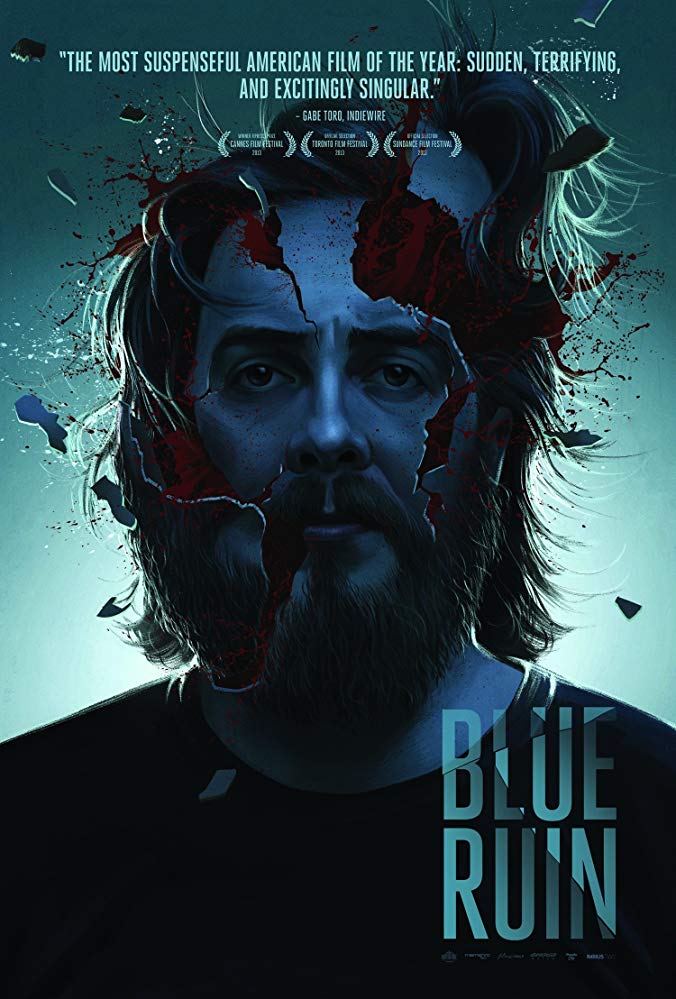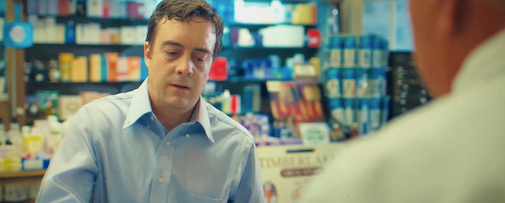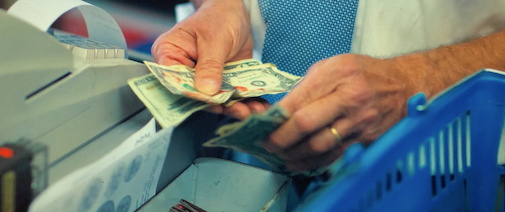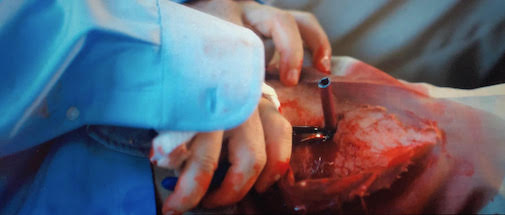 Michael Cusumano here to nominate a New Classic that doesn't get discussed much around these parts.
Michael Cusumano here to nominate a New Classic that doesn't get discussed much around these parts.
Scene: Self-surgery
Nolan’s Batman trilogy is supposed to be the grounded version of the Bruce Wayne mythology, but really, that movie arrived eight years later in the form of Jeremy Saulnier’s Blue Ruin.
Like Bruce Wayne, Blue Ruin’s Dwight Evans (played memorably by Macon Blair) finds himself unable to process the murder of his parents. Unlike the Caped Crusader however, the trauma doesn’t set him on the path to becoming a crime-fighting ninja, so much as it leaves him a haunted vagrant who survives by trash-picking down by the boardwalk. When he embarks on a spree of vigilante retribution, Dwight has no lofty ideas about the betterment of society. It’s more of an indirect suicide attempt...
“What if a man who is utterly inept at violence embarked on a violent rampage?” It has the potential to be too cute a concept – a Kick-Ass-style spoof for the Death Wish films - but Saulnier is too smart to settle for cheap shots.
Instead, Blue Ruin takes the premise of a forgettable Z-grade thriller and elevates it until the genre tropes fracture and crumble under the weight of the screenplay’s pitiless logic and reveal themselves to be the fantasies they are.
The most cringe-inducing example of Saulnier’s flair for subverting clichés is the scene when Dwight is forced to perform surgery on an arrow stuck in his leg. It’s one of those scenes best experienced in a packed theater given its ability to send even those who fancy themselves numb to movie violence into highly vocal fits of squirming.

At this point, the movie has already upended a lot of our expectations. To our surprise, Dwight has managed to complete his quest in the first half-hour of the film, killing the man he believes murdered his parents. Sure, Saulnier seems to be saying, if all you want to do is leap out of a bathroom stall and stab someone, that doesn’t require any of Liam Neeson’s “particular set of skills.”
The arrow ends up in Dwight’s leg after the dead man’s brothers don’t say “fair’s fair” to Dwight’s evening of the body count and show up looking for blood. By the time he’s parked in the woods trying to get it out,we may think we’ve caught onto the game Blue Ruin is playing, but Saulnier demonstrates just how deeply ingrained some of our action-thriller expectations run, specifically, the Tough-Guy-Repairs-His-Own-Injury trope. Dwight has likely gleaned what little strategy he has from action movies, so he figures all one needs to repair an injury is a few basic tools and a tolerance for pain. If Rambo can cauterize his own bullet wound with gunpowder, Dwight oughta be able to yank an arrow out of his thigh. “Don’t go to the hospital!” the experienced moviegoers yell from the audience. That’s where they get ya.

Dwight goes to a pharmacy to cobble together his make-shift surgical tools in a direct quote from the No Country For Old Men sequence in which Chigurh tends to his bullet wound, (Dwight and Chigurh are even injured in the same spot) Instead of improvising an explosion in order to steal the supplies, a la Cormac McCarthy’s killing machine, Dwight opts to pay cash. When the pharmacist notices one of the bills is caked in blood the best tough guy quip he can muster is “I, uh…I just, uh…Yup.”
Even hardened fans of action thrillers might get a little light-headed during Dwight’s attempt at self-surgery. He fails and fails and fails to push through the blinding pain and extricate the arrow, succeeding only in enlarging the wound. Turns out manly resolve and a pair of pliers is no match for a lack of medical knowledge and an arrow lodged in the femur. In the scene’s mordant punchline Dwight ends up at the emergency room anyway, sputtering “I had an accident on my leg” before collapsing from blood loss.

Films about vigilante justice generally include some fig leaf moment at the end to suggest the film doesn’t endorse all the violent wish fulfillment it just portrayed in loving detail. Blue Ruin has no need for any such disingenuous last-minute recanting. It walks the walk from frame one, portraying such acts as inherently poisonous, self-indulgent and meaningless. While still making an electrifying film, Saulnier strips the violence of any shred of coolness. Dirty Harry may toss in a thoughtful moment in the final seconds where Eastwood throws away his police badge, but all the dudes watching still want to be Clint. Nobody wants to project themselves into poor, sad Dwight, sitting in the back seat of his car, whimpering and gushing blood, bug-eyed and drenched in sweat, as helpless to remove the arrow from the leg, as he is to remove himself from the cycle of violence he ignited and can’t call off.
Related post:
Blue Ruin review, Sundance 2014